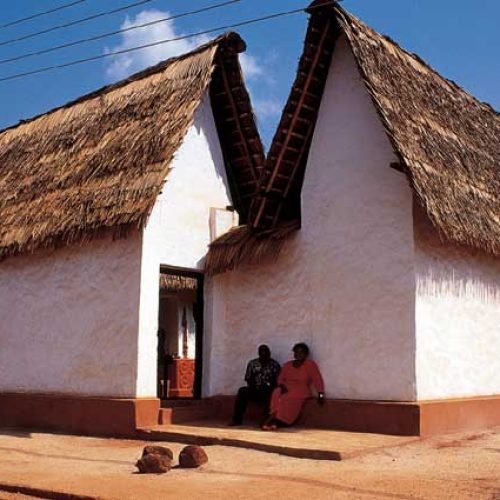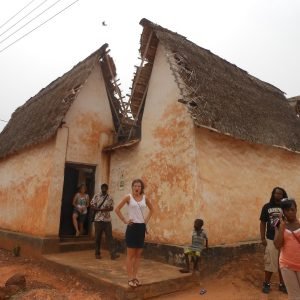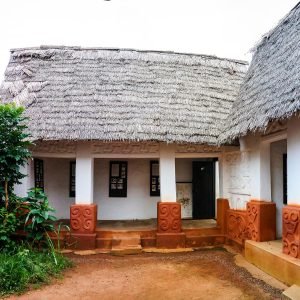Traditional Ashanti buildings are located in the central region of Ghana, known as Ashanti. This region is the cradle of the Ashanti people and is home to many relics of their culture and traditional architecture. Major sites include Kumasi, the capital of the Ashanti region, home to the royal palace of the Ashanti king, known as Manhyia Palace. Kumasi is an important cultural and administrative site where visitors can learn more about Ashanti history and tradition.
Traditional Ashanti buildings are characterized by the use of natural materials such as earth, wood and thatch. They are built with a wooden structure, cob walls and a thatched roof. Rectangular in shape, they generally have several storeys and walls decorated with symbolic geometric motifs representing elements of Ashanti culture and spirituality.
In addition to houses, community structures such as royal palaces and temples can also be found in the Ashanti region. The Ashanti king's royal palace, Manhyia Palace in Kumasi, is an important site. Temples are places of worship where the Ashanti practice their rituals and religious beliefs.
Although traditional Ashanti buildings have not been specifically inscribed on UNESCO's World Heritage List, the Ashanti region is recognized for its cultural and historical importance as the cradle of the Ashanti kingdom. Certain elements of this culture, such as the Ashanti chieftaincy system and traditional ceremonies, have been inscribed on UNESCO's Representative List of the Intangible Cultural Heritage of Humanity.
A visit to the traditional Ashanti buildings in the central region of Ghana offers a unique opportunity to appreciate the architecture, history and culture of the Ashanti people. Visitors can discover local craftsmanship, traditional building techniques and learn more about the symbolic significance of these buildings in the daily lives of the Ashanti people.




